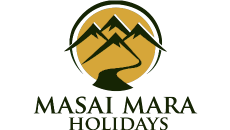The Selous Game Reserve is Africa’s largest game reserve covering an area of 47,500 sq km (18,340 sq miles), it is Tanzania’s largest protected area: 50 percent larger than Switzerland, situated at the core of a 155,000-sq-km (59,800-sq-mile) cross-border ecosystem traversed by some of the world’s greatest remaining herds of buffalo (150,000), hippopotamus (40,000) and sable antelope (8,000).
Selous Safari
Selous safari offers a wide range of wildlife activities than any other park in the region including; game drives, boat safaris on the mighty Rufiji River, Tanzania’s largest river, as well as bush walks and fly-camping on the lakes, most of which are forbidden in other Savannah parks in the region. Game drives on your Selous Tanzania safari focus on a region of five lakes linked by channels fed by the Rufiji. Giraffe, buffalo, elephant, Impala, waterbuck, wildebeest, eland, greater lady and zebra are all common here. For many, the highlight of Selous safari is the boat excursion along the Rufiji River, it’s muddy waters a populated by high numbers of crocodiles, and hippos. Grazers also come to drink at the River bank and the bird life is fantastic.
Selous Game Reserve Safari is perfect for travelers who want to experience Tanzania’s wildlife in a pristine and secluded environment. The reserve is less crowded than other popular safari destinations, giving visitors a true wilderness experience.
When planning your Selous Safari, it’s important to choose a reputable tour operator who knows the area well. A good tour operator will help you plan your itinerary based on your preferences and budget, ensuring that you get the most out of your trip.
Selous Game Reserve is a must-visit destination for anyone looking for an incredible wildlife experience. With its diverse range of fauna and flora, it’s no wonder that Selous has become such a popular destination for travelers seeking adventure and unforgettable memories. Book your Selous Safari and experience the wildlife and culture of Tanzania like never before.
The life-sustaining waters of the Rufiji River divide this semi-arid wilderness into two wildly disproportionate sectors: an immense and practically impenetrable southern block used exclusively by commercial hunting concerns, and a more compact northern circuit – about 8 percent of Selous’ total area – dedicated to less bloodthirsty forms of tourism. Selous is undeniably a fine game reserve, but the statistics are misleading. On top of this, its elephant population has sadly been decimated by poaching, falling from nearly 110,000 elephants to just 15,000 in 2016.
The Rufiji River
The divisive Rufiji, its constantly mutating course spilling into a labyrinth of intimate, lushly vegetated channels and open lakes, defines the Selous Game Reserve safari. It is best explored on one of the motorboat trips offered by most of Selous’ camps. Sandbanks lined with outsized crocodiles, menacing mouths agape, erupt into sinuous energy as a motorboat approaches and the prehistoric beasts slither with one loud splash beneath the river’s surface. Yellow-billed storks and spoonbills scoop methodically through the shallows, pied kingfishers hover overhead like fast-forward clockwork toys, and African skimmers fly low across the surface dipping their bright-red beaks into the water, and carmine bee-eaters swirl in a crimson cloud around the exposed mud banks in which they breed.
Becalmed channels flow northwards from the main river, past swampy islets where elephants browse and waterbucks graze. And, as the motorboat returns to the lodge, a light evening breeze wafts across the water to diffuse the still heat of the day, hippos enter into earnest grunting debate, and a red-coal sun sinks behind a neat row of borassus palms – the quintessential African river scene. A network of game-viewing roads connects the lakes, where congregations of zebra, giraffe and various antelope slake their thirst during the dry season. The odds of seeing a kill here are unusually high: the lions of Selous seem disinclined to follow the time-honoured leonine strategy of stalking their dinner by night, but instead prefer to laze quietly in the lakeshore woodland waiting for lunch to venture within pouncing distance.
Wild dogs snuggle below shady raffia palms in the heat of the day, emerging towards dusk to scamper and frolic at the water’s edge. In recent decades, wild dog populations elsewhere in Africa have gone into rapid decline: the estimated 1,000-plus individuals that roam the Selous account for more than 20 percent of the free-ranging global population, exceeding that of any other African country.
How to Get to Selous Game Reserve?
Selous Game Reserve can be accessed both by air and road, the simplest and most popular option is flying into the reserve. Internal roads often become impassable during the rainy months due if April and May.
By Air
Game packages as offered by most camps in the Selous include activities and games which makes fly in safaris the most popularly booked option to visiting Selous Game Reserve. The popular option is to fly from Dar es Salaam. The main flight aggregators are coastal Aviation and Safari Air Link.
By Road
The long bumpy road drive makes it also possible to visit Selous Game Reserve. There are very few advantages of traveling by road unless you have plans to visit Kilwa and the south coast. By road, the most direct route is 240km easterly road via Kibiti and Mloka to Mtemere Gate, which is a 6-hour drive along the Tanzam Highway. If you are visiting on a southern circuit safari to include visits to Mikumi National Park or Ruaha National Park, the best route runs 140km between the Morogoro town to Mtembwe Gate via Mkuyuni and Kisaki.
